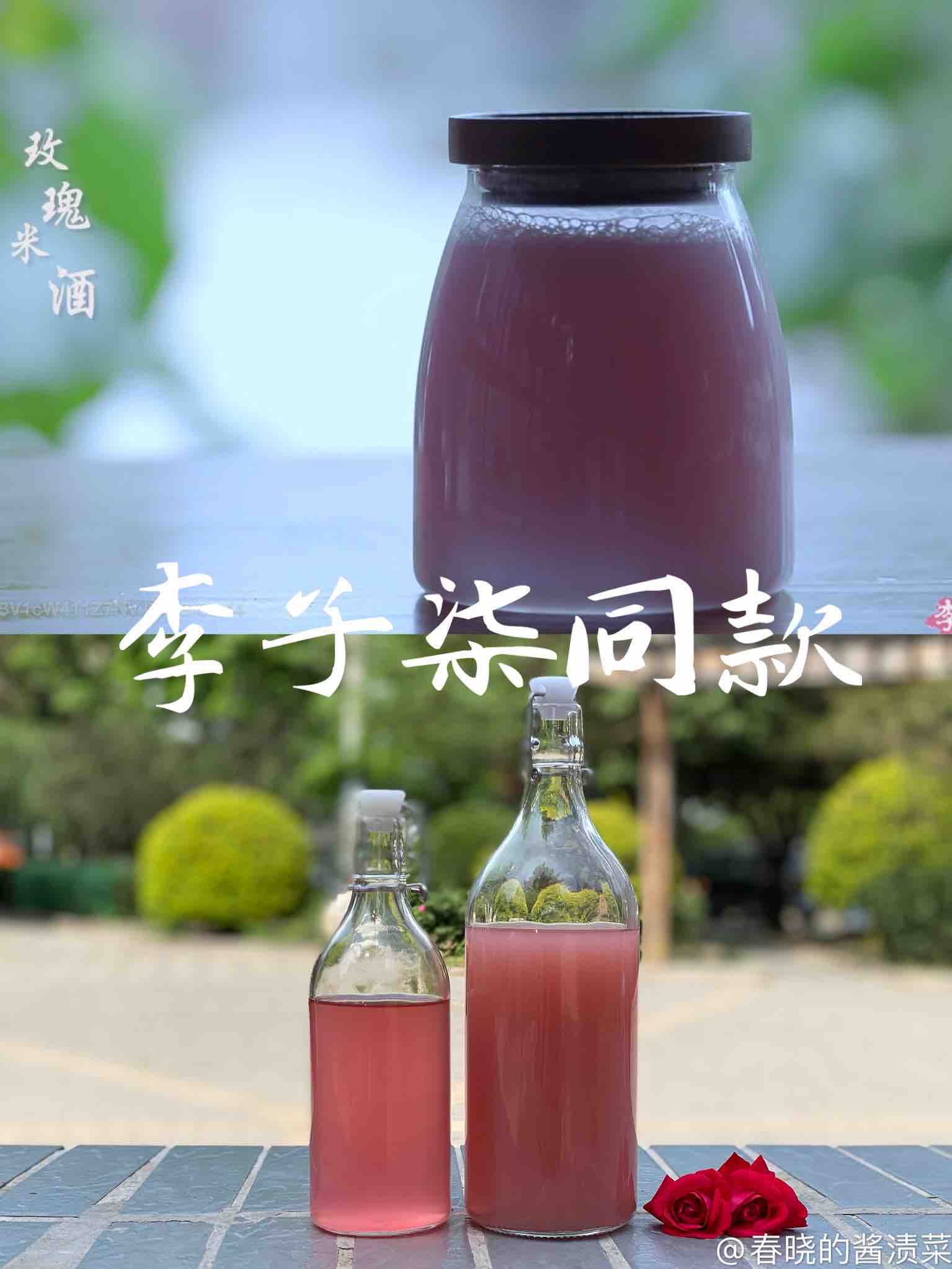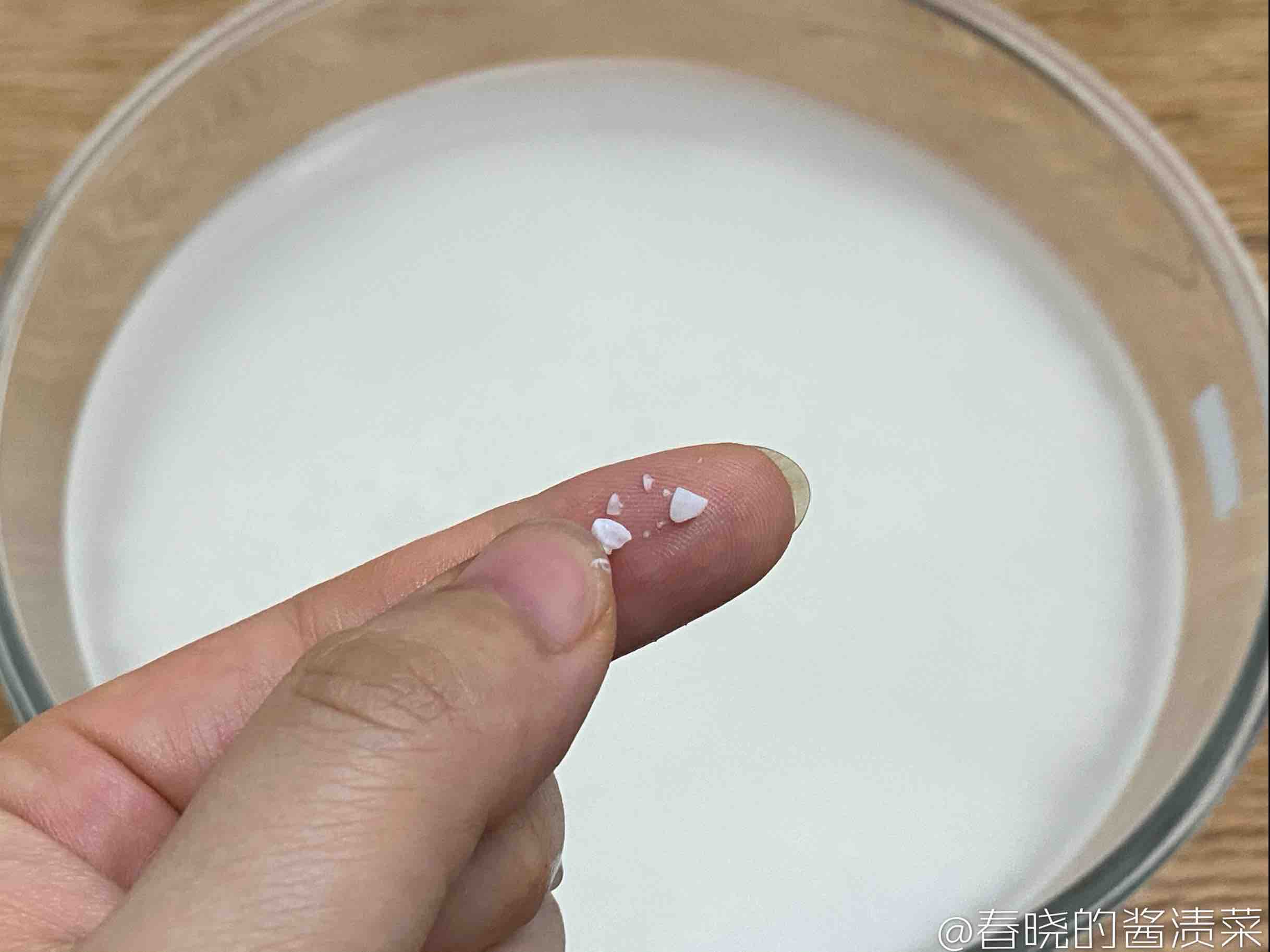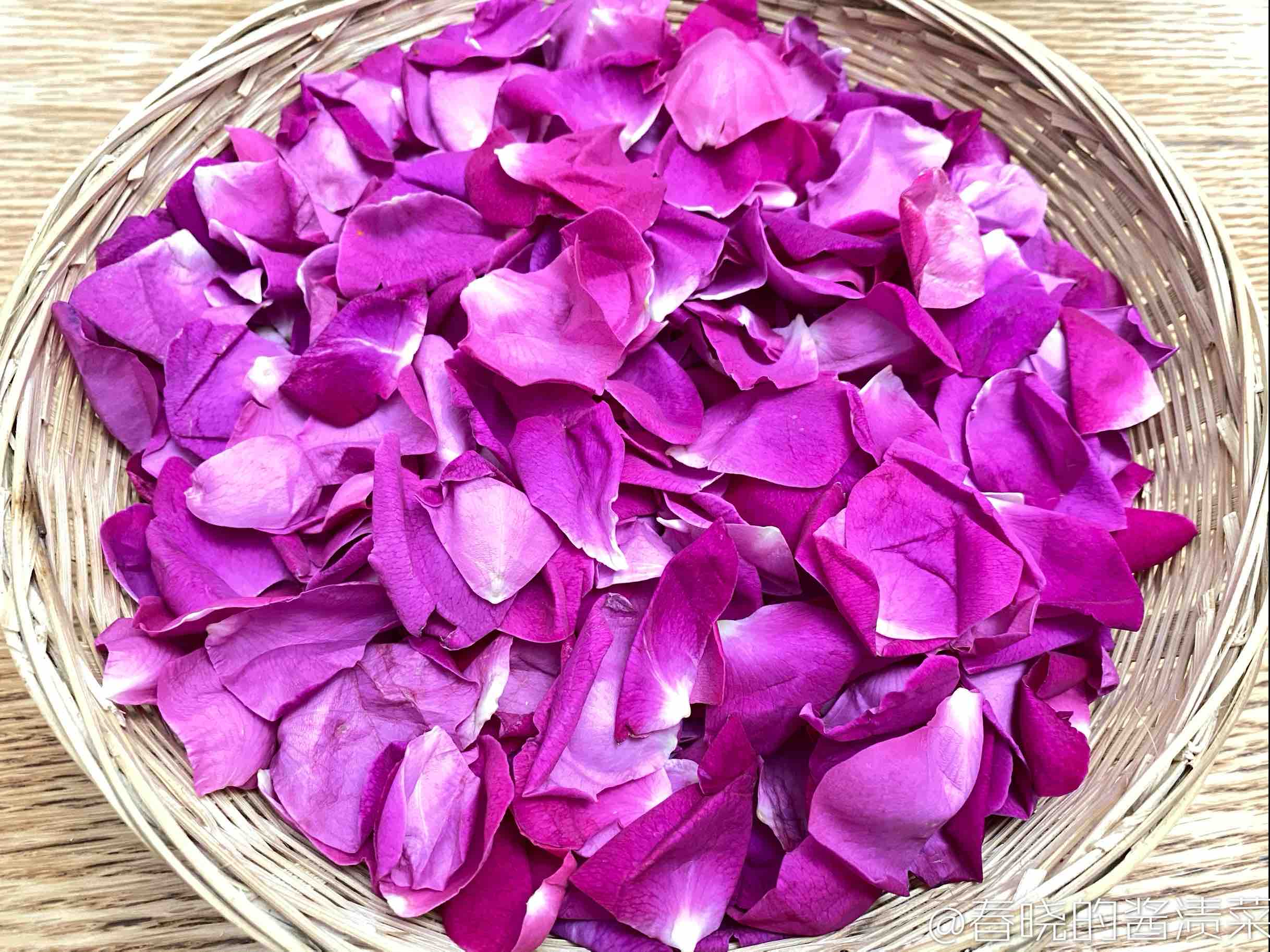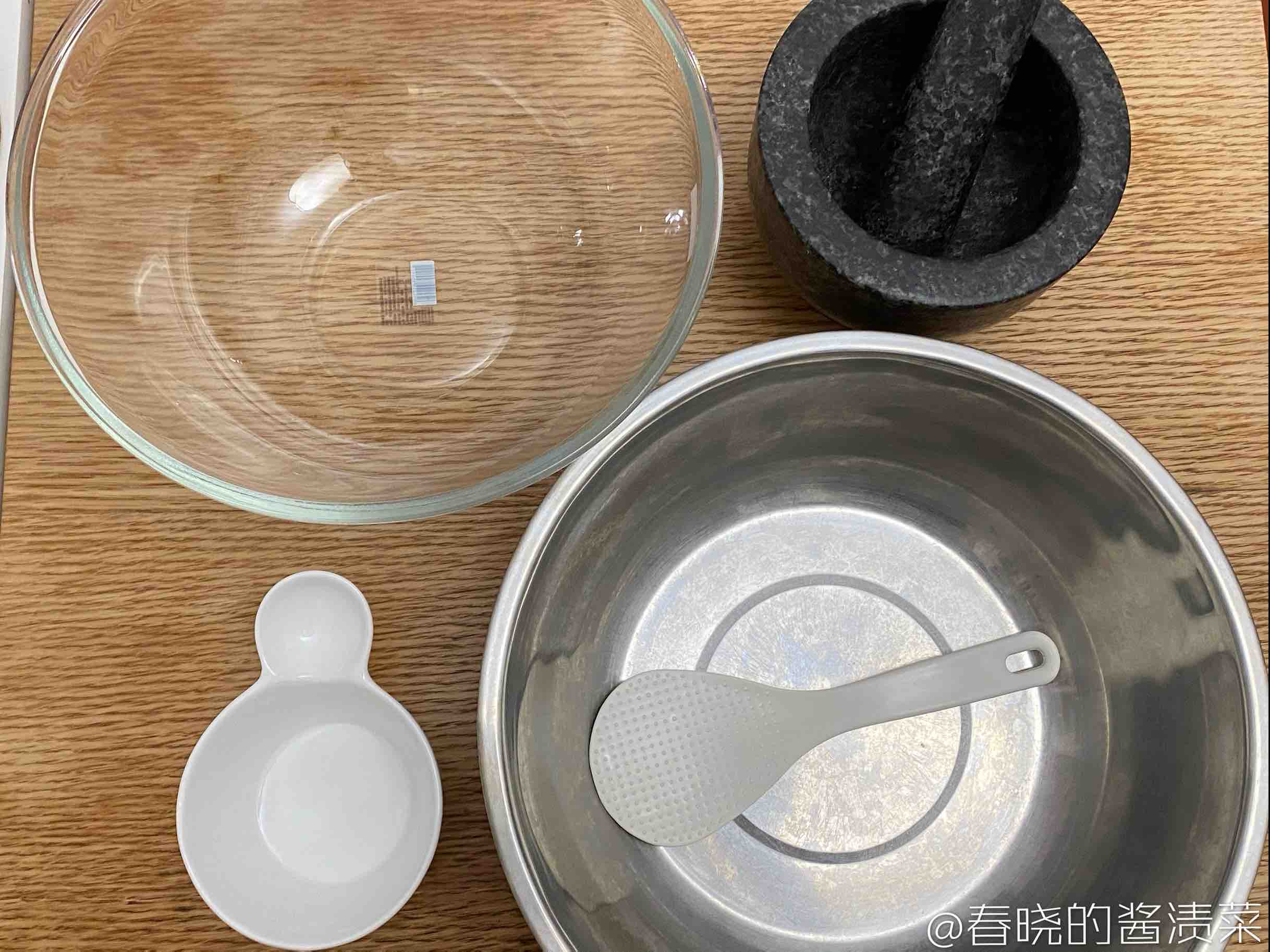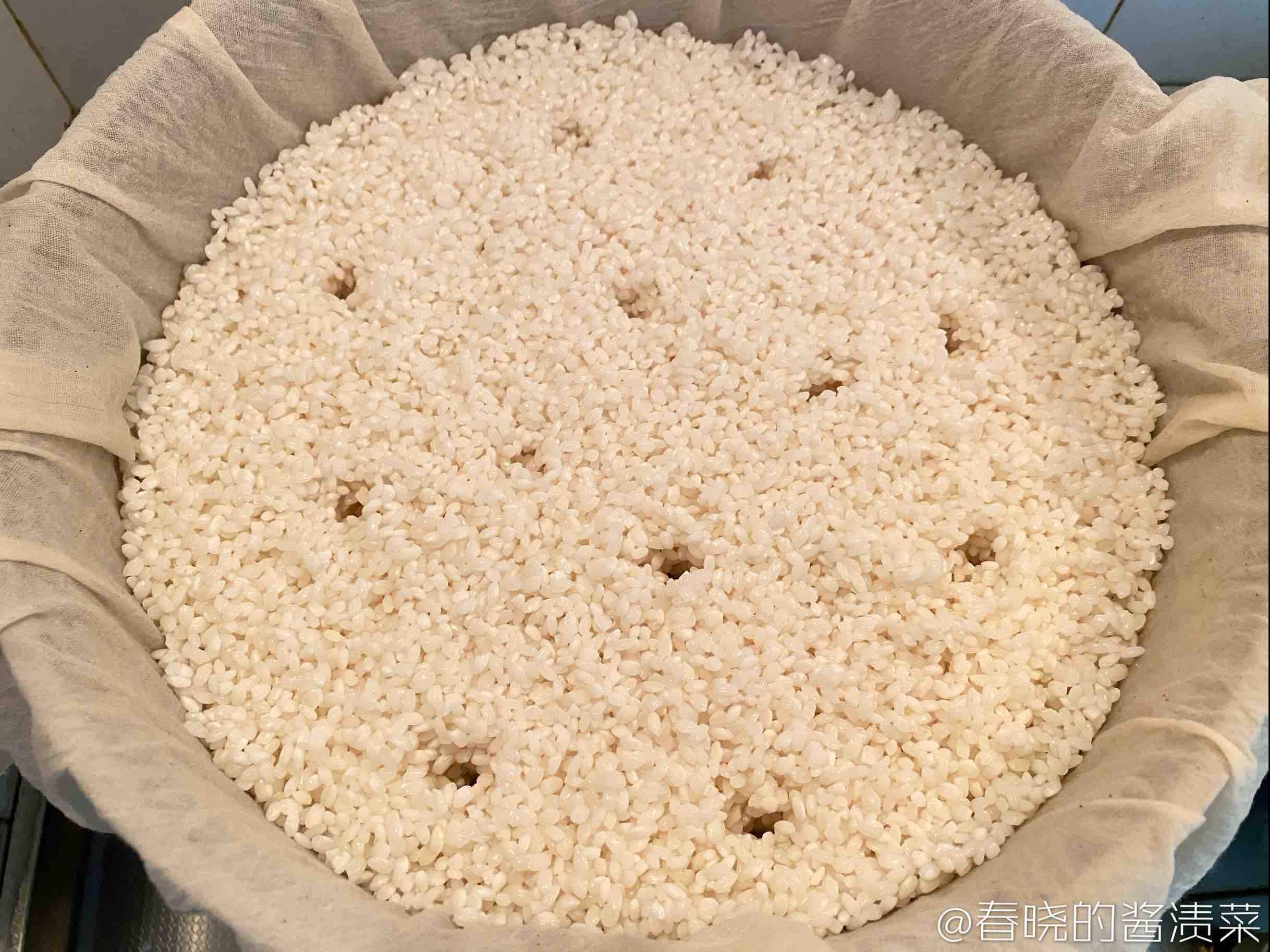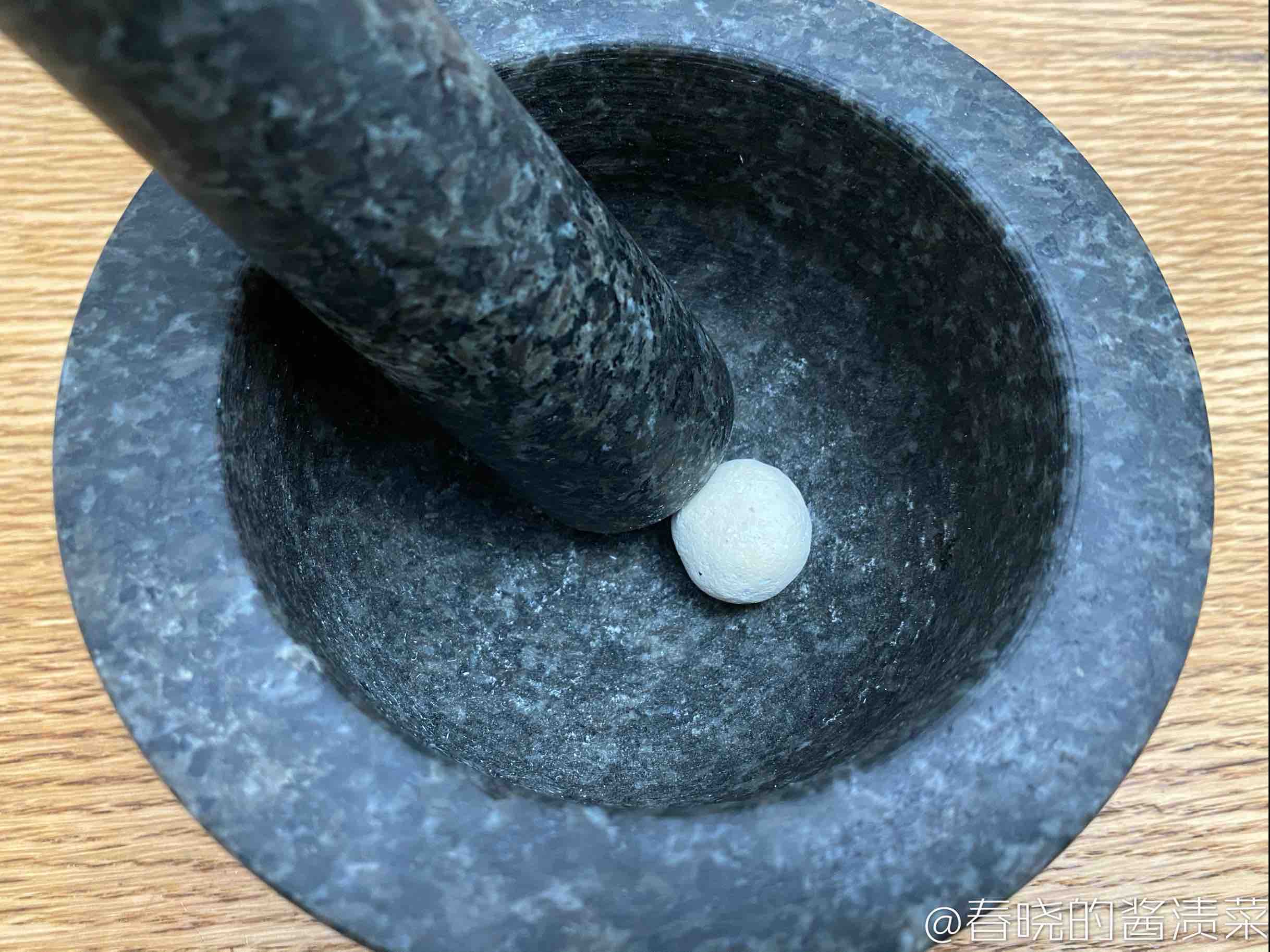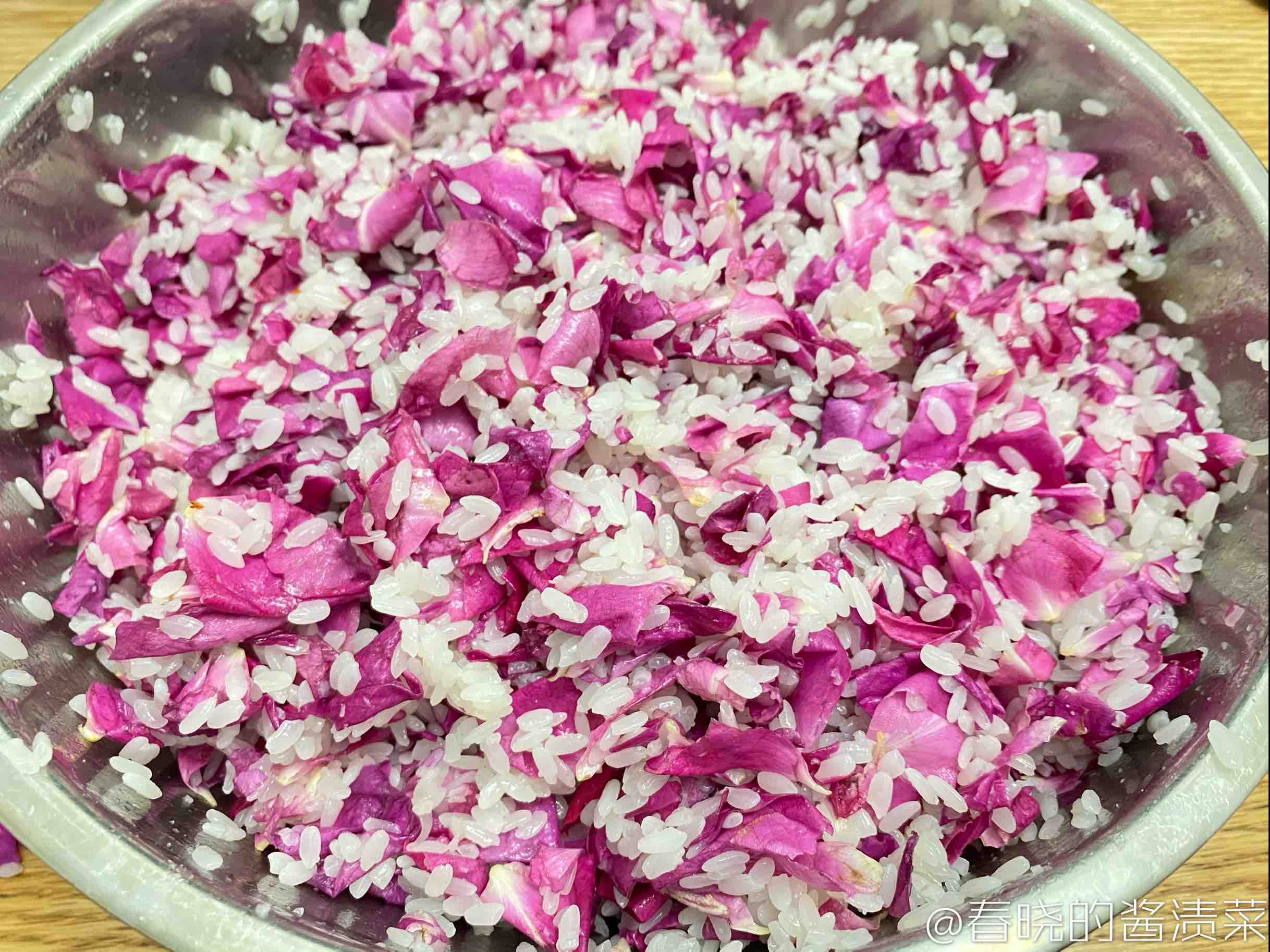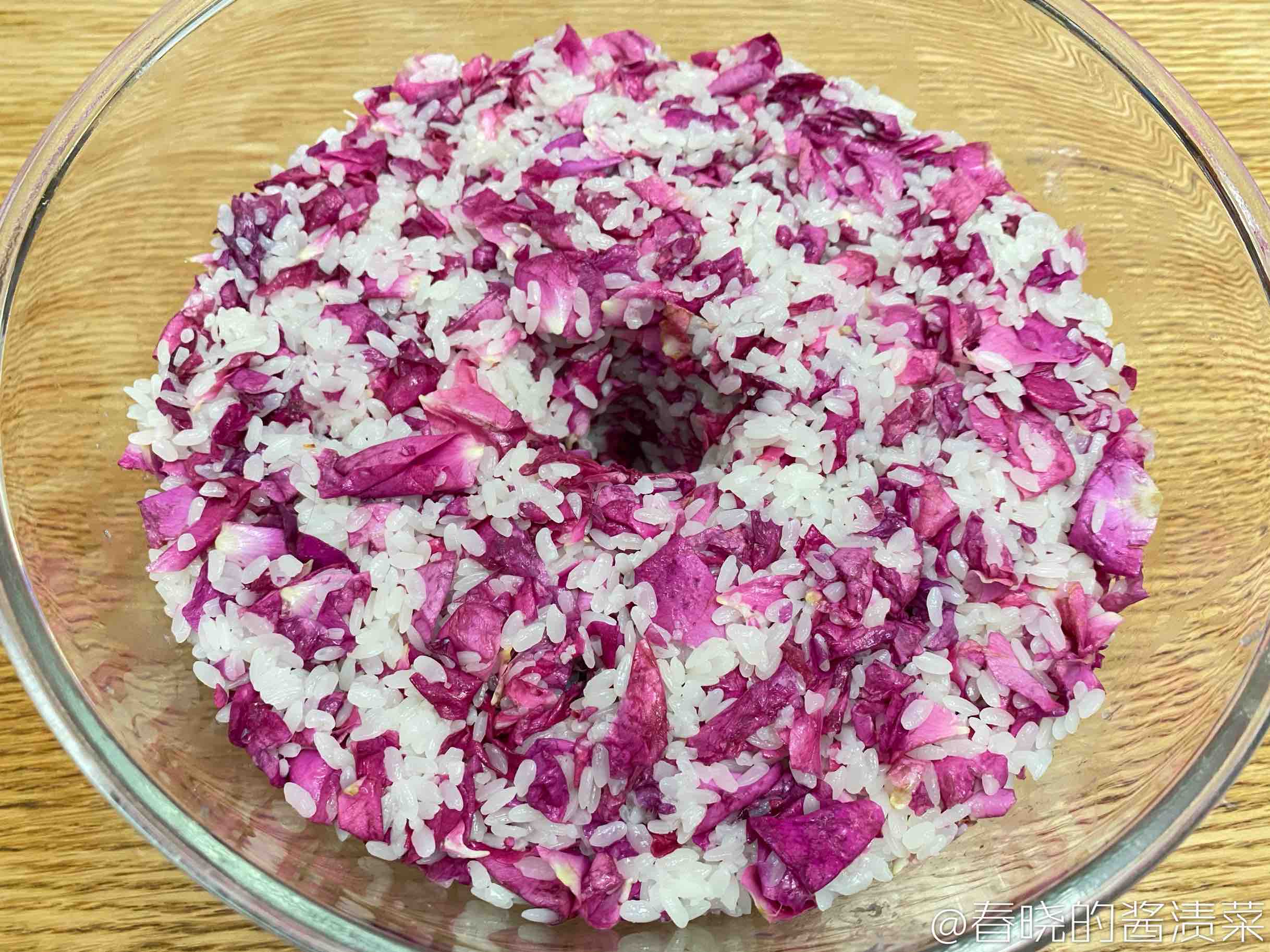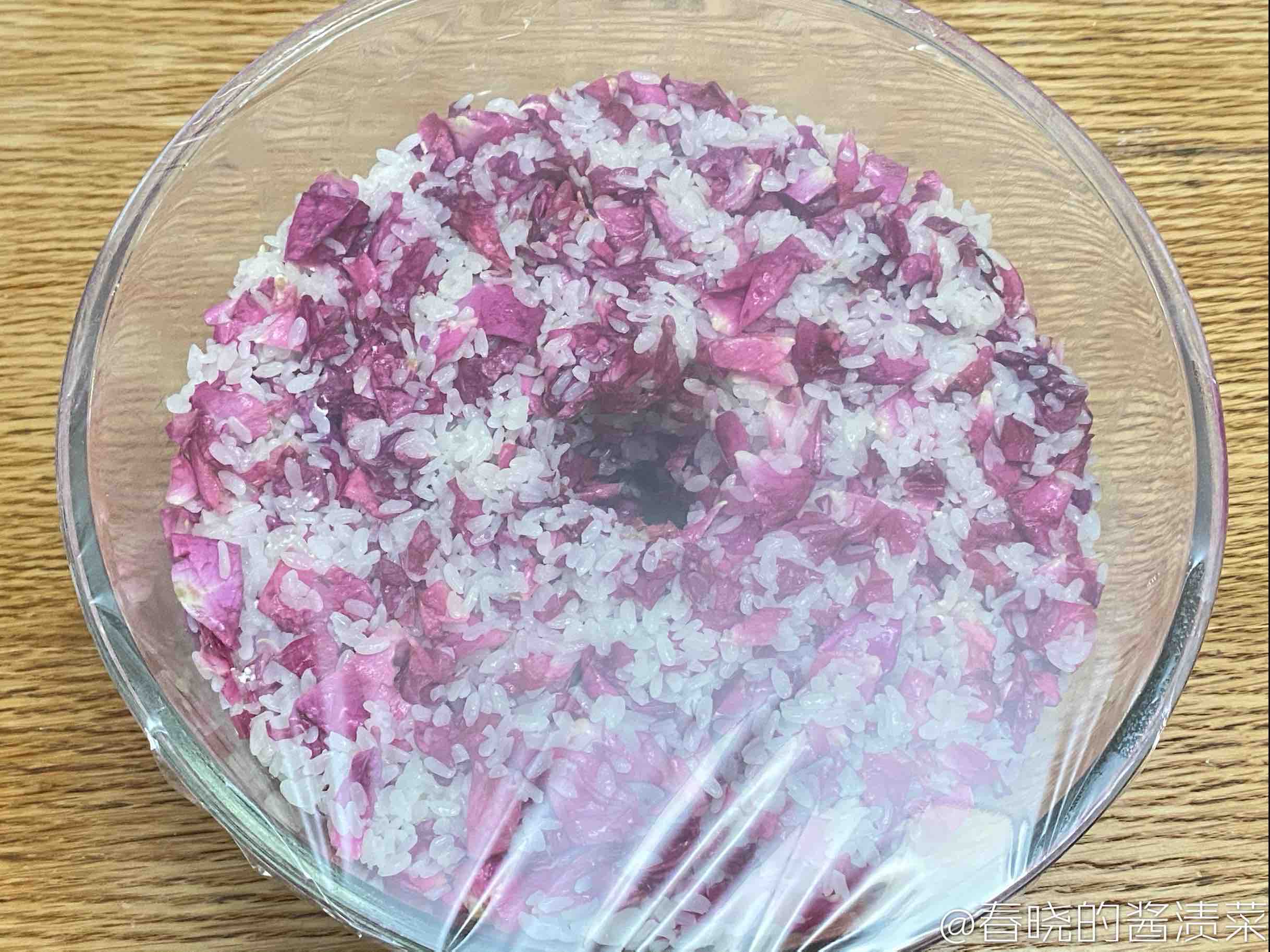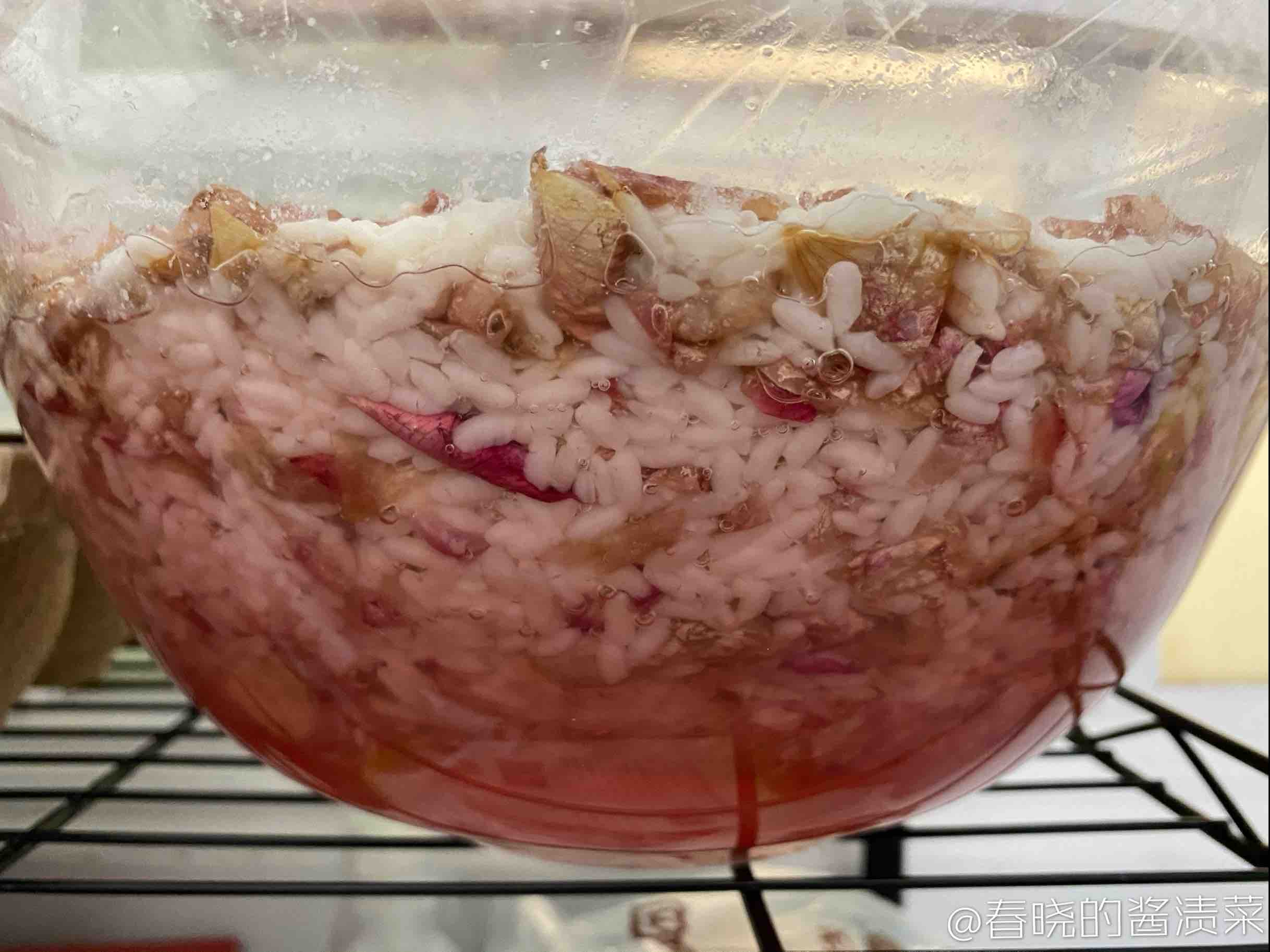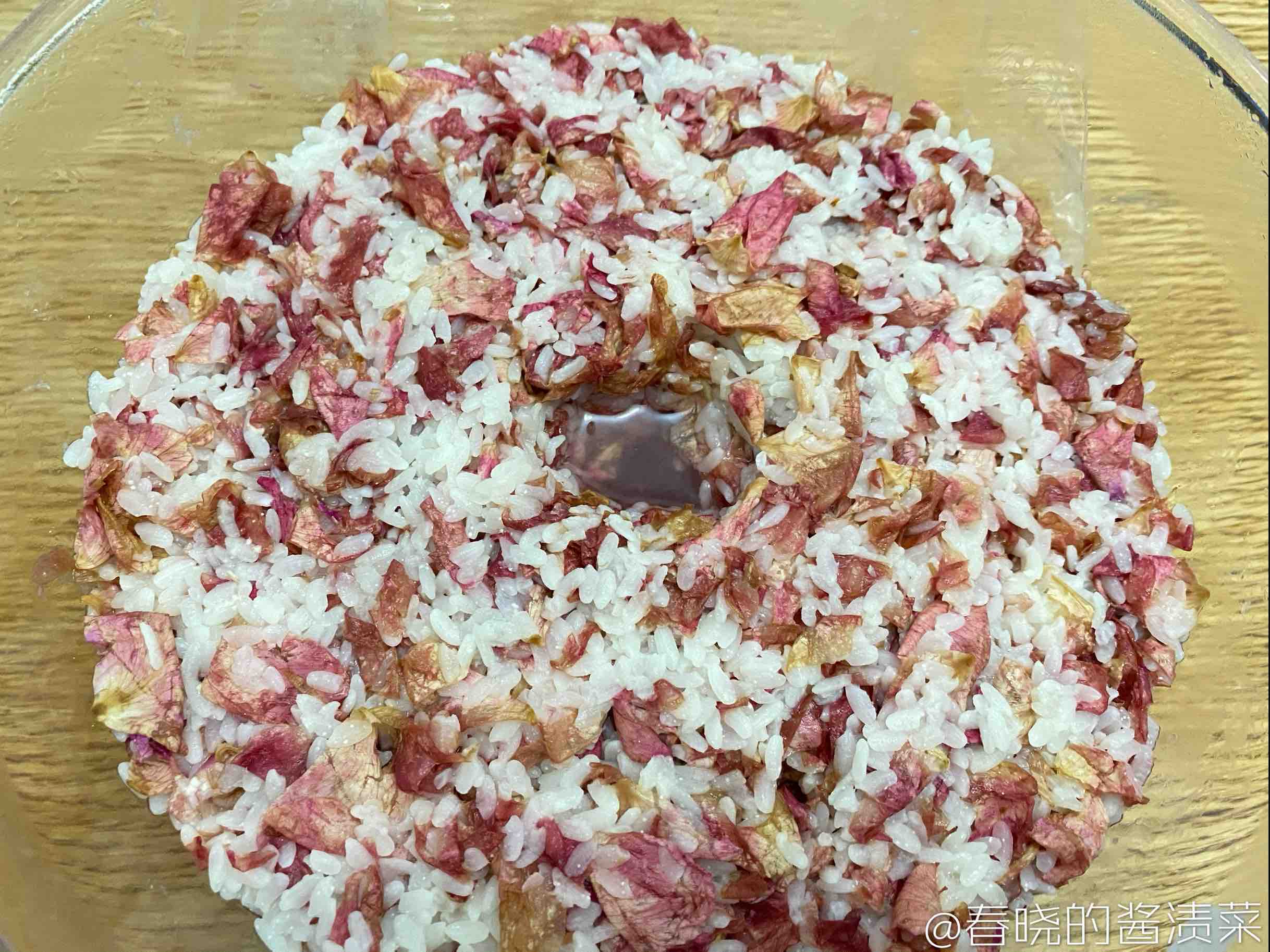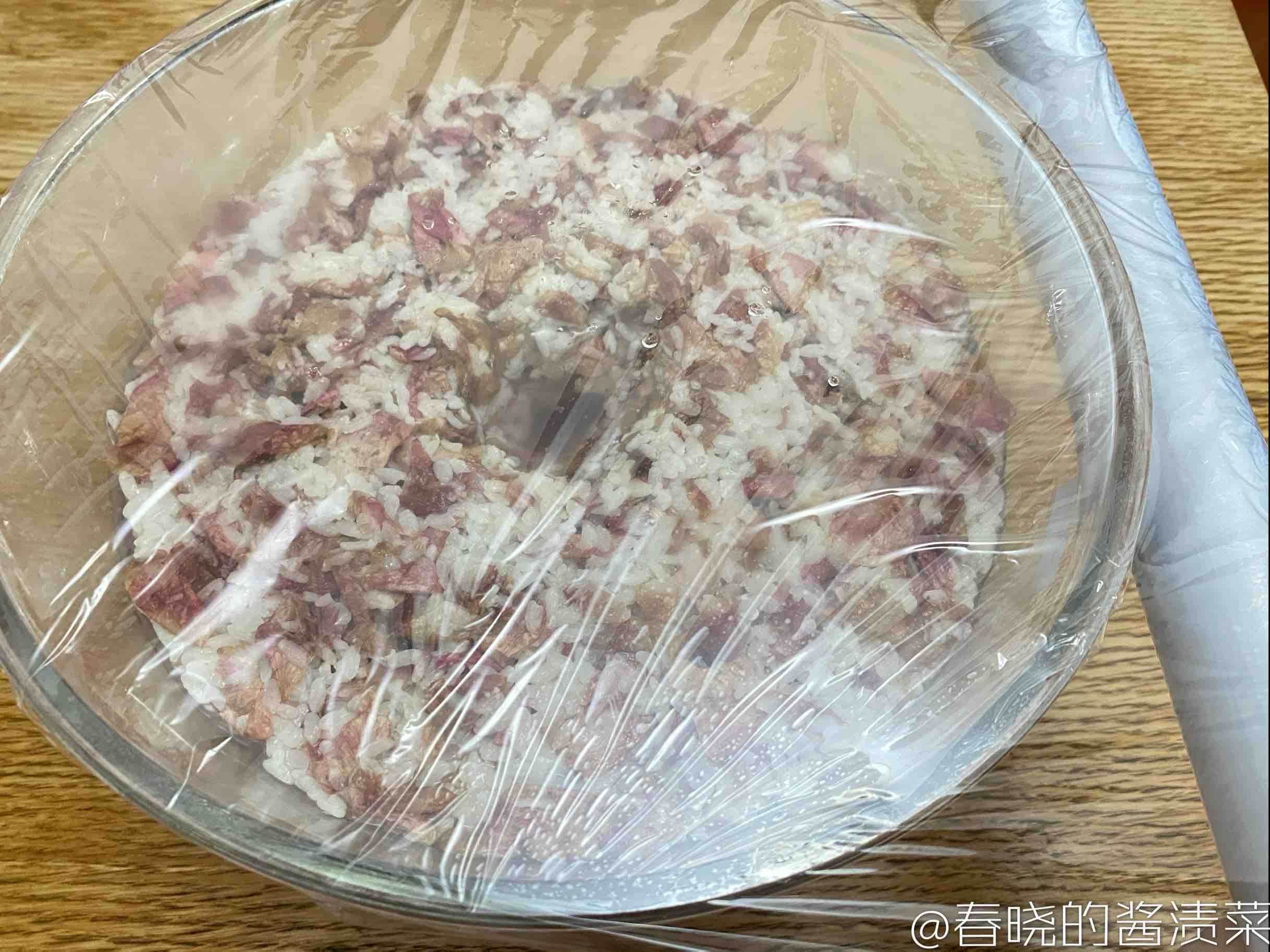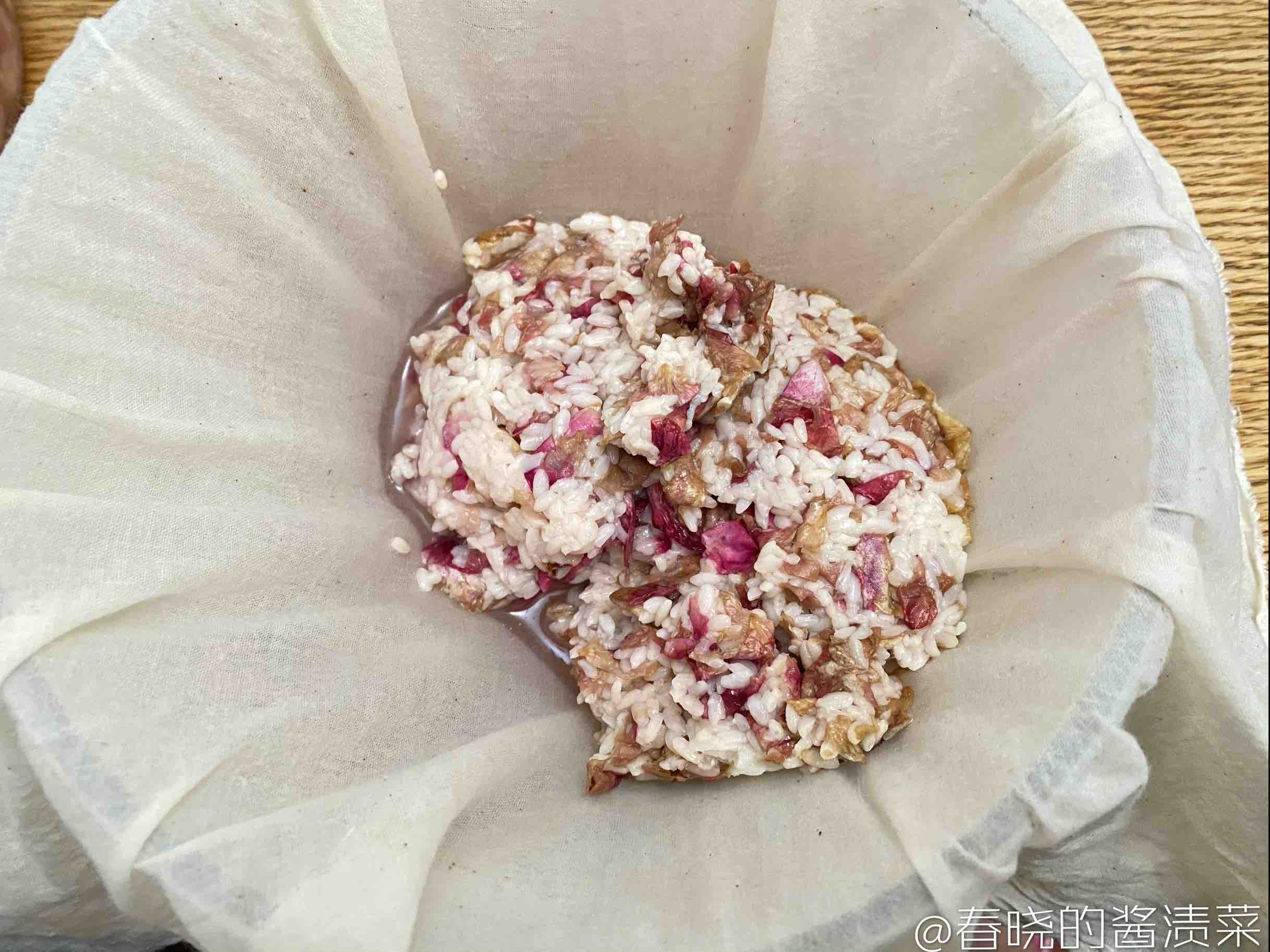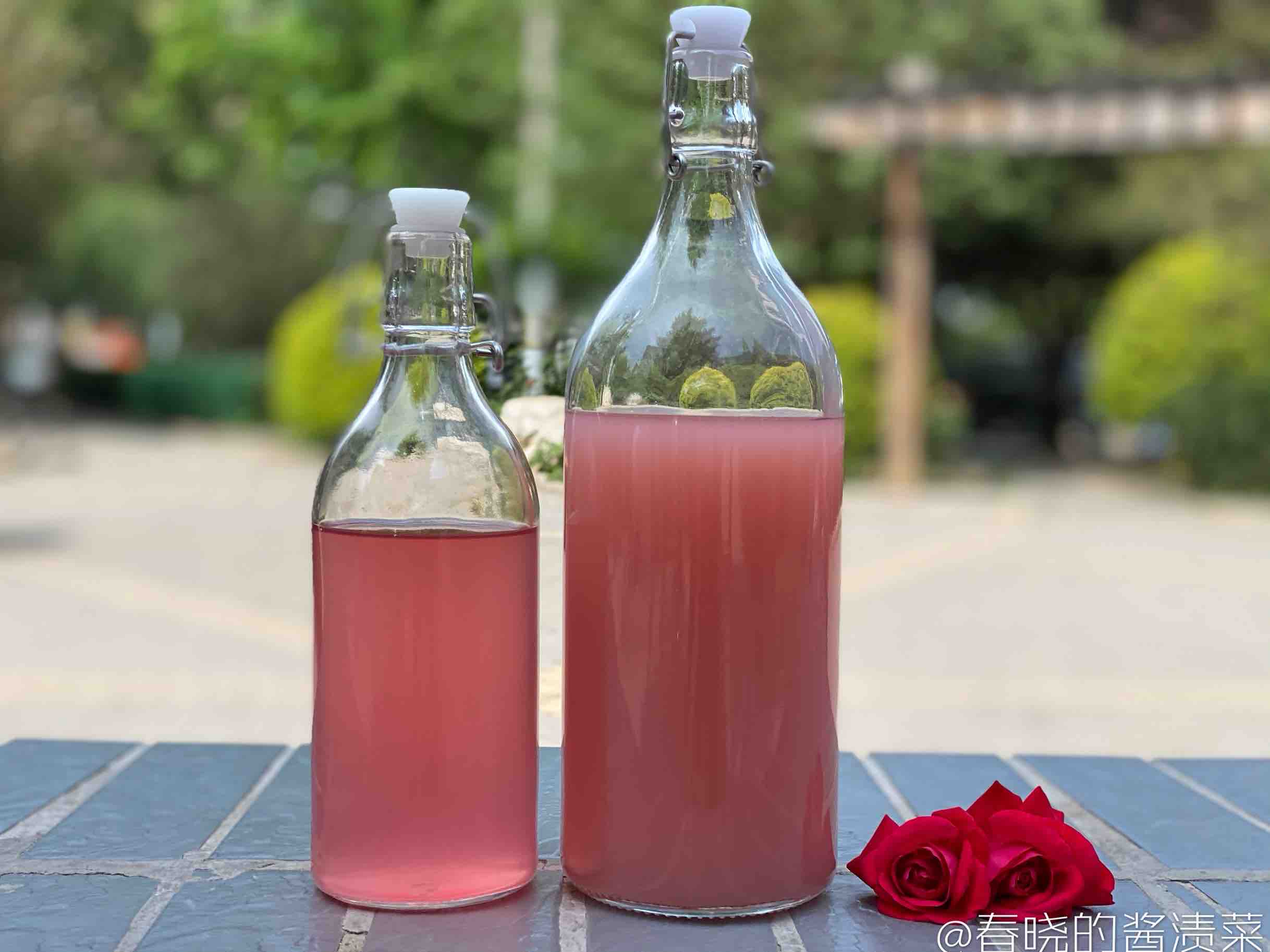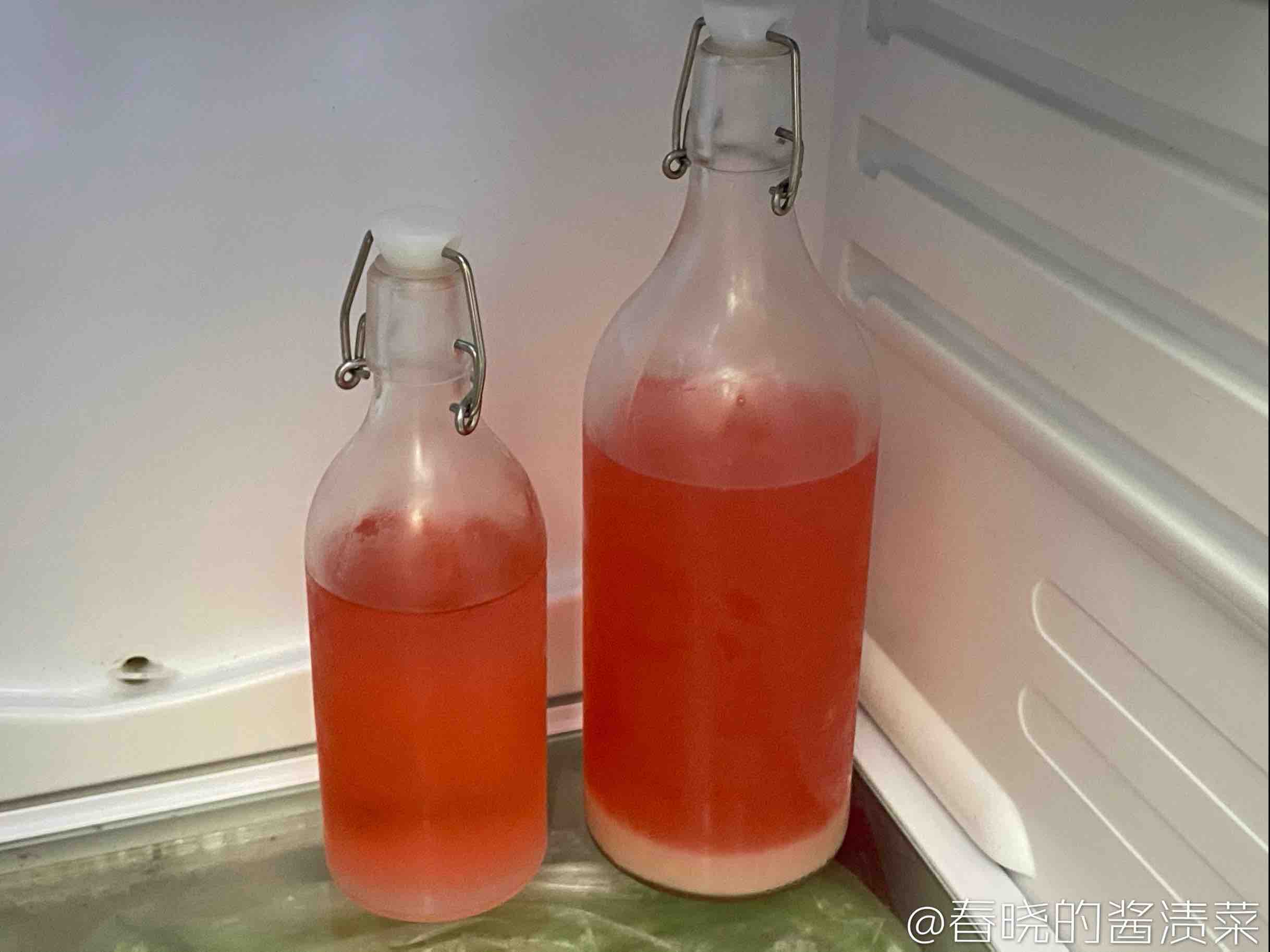Li Ziqi's Same Style of Rose Glutinous Rice Wine, Don’t Taste Too Good
1.
1 soaked rice. Soak the round glutinous rice for more than 2 to 3 hours, to the extent that it can be broken with a fingernail. Some friends wondered if the soaking time is too short. I have soaked for 10 hours before, and the effect is the same, so it’s enough to crush it.
2.
2 Treat the petals. Pick the petals clean, remove the stamen and dry petals, and set aside. I didn't wash it, because the petals took a long time to dry after washing, and it is easy to infect bacteria when they are stained with raw water and then fermented. If you want to wash to the last step, rinse with a cool boil to avoid getting wet with raw water.
3.
3 Disinfection. While soaking the rice, clean, disinfect and dry all the utensils that will be used later. The disinfection method can be high temperature or high alcohol or 75% alcohol. If you are very experienced, you can ensure that the appliance is clean and free of water and oil. I have tried it and it has been very successful.
4.
4 Steamed rice. Drain the glutinous rice, put it in a steamer covered with gauze, steam for 30 minutes, turn off the heat, turn off the heat and simmer for another 10 minutes, let the rice be cooked through. It’s best not to boil it in water at this step, the boiled rice is sticky
5.
5 stalls cool. Put the steamed rice into a container with a larger opening and spread it out and let cool to about 40 degrees
6.
6 The sweet koji is crushed, and the water under 30 degrees is stirred to dissolve. The ball-shaped koji I bought on the Internet can also be used with the powdered Anqi sweet koji sold in the supermarket. The koji is not very soluble in water, so stir in advance when sprinkling. Consult the merchant for the amount of distiller's yeast, and generally use twice the amount recommended by the merchant.
7.
7 Mix music. Add the petals and koji into the rice and stir evenly. During this time, add cold white boil to break up the rice. You can add cold boiled rice first and then koji. Cool boiled rice has the effect of cooling the rice, because the temperature of koji should not exceed 30 degrees and it will burn to death. The amount of water added was adjusted by myself. I added 400ml of water. In short, when this step was completed, the rice grains were distinct and did not fall apart, and there was no excess water at the bottom of the basin.
8.
8 into the cylinder. Put the mixed rice into a fermentation container, arrange it evenly, and leave a hole in the middle. Finally, sprinkle the remaining distiller's yeast water on the surface and the opening of the hole. Sprinkle a small amount to ensure that the bottom of the hole is anhydrous, otherwise it is impossible to check the status of the wine.
9.
9 sealing. Cover with plastic wrap. Note that the Rhizopus in the koji is aerobic, so oxygen is needed in the early stage of fermentation. If your container is too full, you need to pierce a few small holes in the plastic wrap to ensure oxygen delivery. If the container is large enough, it can be completely sealed. Don't open your mouth, the wine is very sweet and easy to attract small insects, and the plastic wrap has the effect of keeping warm and isolating some bacteria.
10.
10 Fermentation. Leave it at about 30 degrees to ferment for 3 to 5 days. The room temperature in my home is about 27 degrees, and the subsequent fermentation process is carried out according to this temperature. If the temperature is low, it will take longer time and increase heat preservation measures.
11.
11Add water. After about 2 days of fermentation, the wine in the dimple is 80% to 90% high. At this time, the finished product is rose wine fermented and ready to eat. But if you want to come up with more rice wine, you need to add more water. The amount of water is half of the amount of glutinous rice. I added 500ml of mineral water, and the wine is still very sweet. If you like lighter wine, you can add more water, but don’t exceed the weight of glutinous rice, which is 1000 ml.
12.
12 Seal and continue to ferment. This time it needs to be sealed for anaerobic fermentation to allow yeast to convert sugars into alcohol. If it is a transparent container, you will see air bubbles.
13.
13 Open the altar to filter. After adding water and fermenting for one or two days, you can filter it. At this time, you can try the taste of the wine. In short, the more the alcohol tastes, the lower the sweetness. You can find the fermentation point that suits you and filter to find the sweetness and sweetness. The balance of wine taste. The temperature in my home is about 27 degrees. After adding water, I fermented for another two days and then filtered it.
14.
14 bottling. A total of about 1600 ml of wine is produced, and the bottle on the left is directly filtered and very clear. The bottle on the right is squeezed, with rice milk in it, which is pale pink. There is still a big cup drunk by her husband. Be careful not to fill the bottle too full, the wine will continue to ferment to produce gas, pay attention to gas release.
15.
15 Save. The filtered wine needs to be refrigerated to delay fermentation, and it is best to drink it within a week. If you can't finish drinking, use the bus sterilization method, that is, the 70-degree water bath method to heat the bottled wine in water for 30 minutes. Be careful not to close the bottle cap tightly during heating to prevent the cap from flying. Heating can stop most of the fermentation, so that it can be stored for a longer time.
16.
16 wine meal. This is the dregs left over after squeezing the wine. My wine is almost fermented, the rice is empty, and there is not much left after squeezing. Throw away the leftover dregs if you don't want it, but the essence is gone. It can also be boiled and filtered to drink, with a touch of sweetness. You can also apply it on your face, it’s a distilled dregs mask.

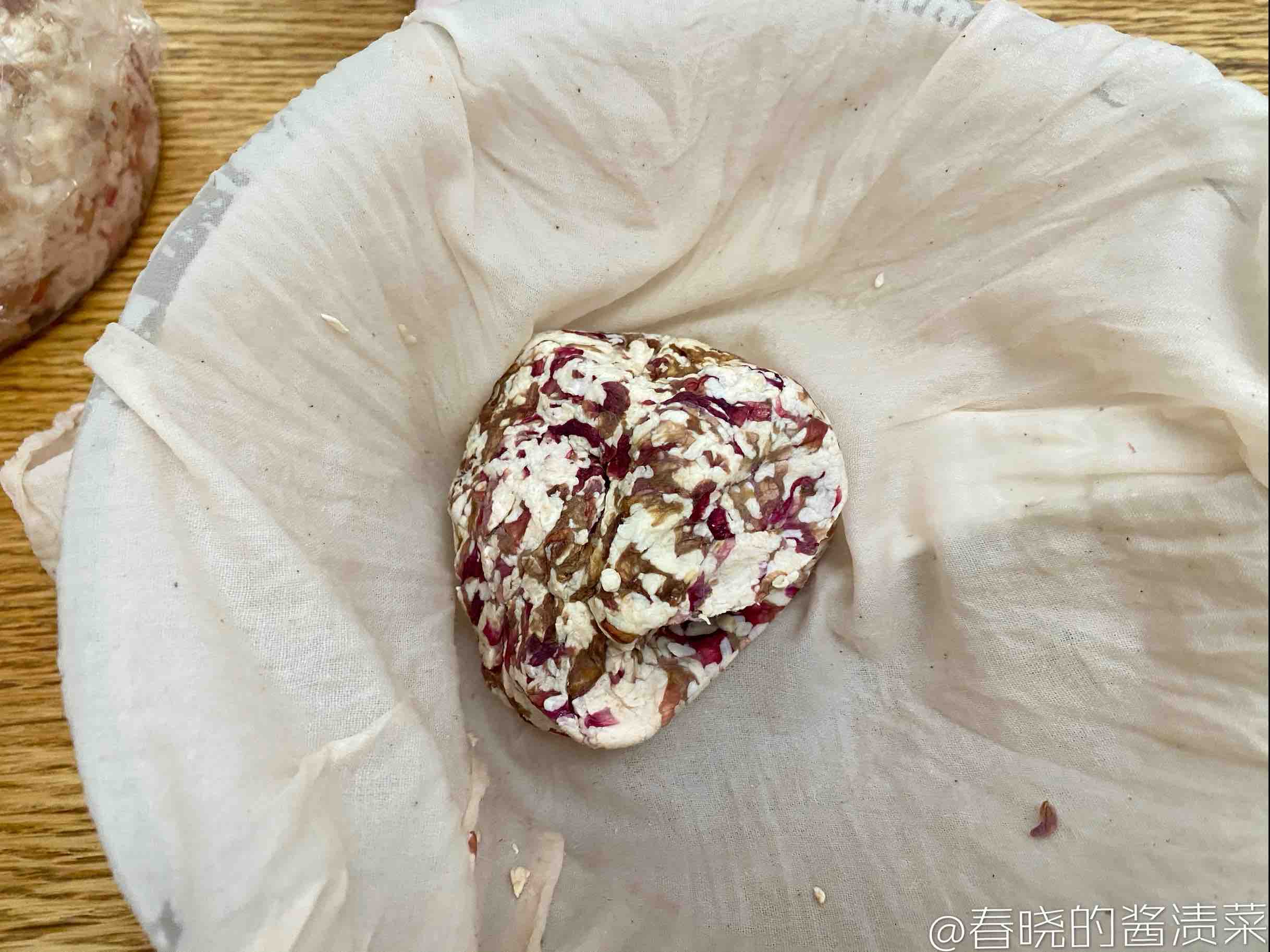
Tips:
1 If white mycelium grows on the surface during the fermentation process, this is the Rhizopus in the koji, don't worry, just stir it directly into the rice. If you don’t pay attention, the rhizomes will grow from white to gray to black. Just dig out the black areas when you eat, and the wine will not be damaged. However, if green, red, yellow or orange hyphae appear, they may be penicillium or aflatoxin, so they should be thrown away immediately.
2 It is normal for the wine made by yourself to be separated after filtration. The precipitate is rice milk, just shake it and drink it. The rice wine sold outside is milky white without layering, mostly with agar added.
3 The wine made with glutinous rice is sweeter. If you want to make other flavors, you can create your own ideas on this basis. Purple rice, glutinous rice, japonica rice, etc. can all be DIY, and you can make a unique taste. The fun of making your own wine.

